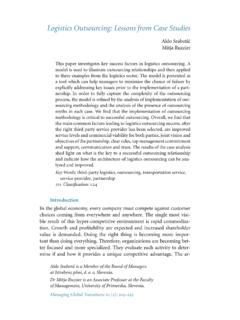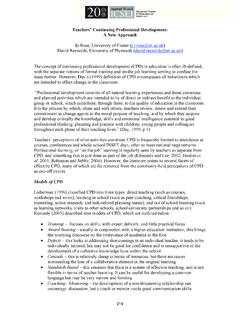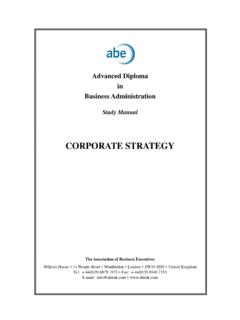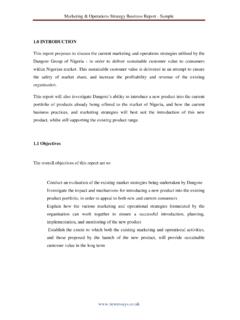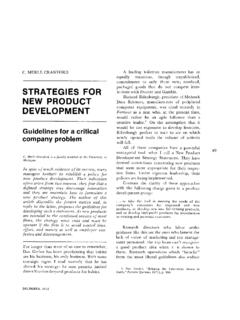Transcription of INFLUENCE OF MACRO-ENVIRONMENTAL FACTORS TO …
1 387 INFLUENCE OF MACRO-ENVIRONMENTAL FACTORS TO THE PROCESS OF INTEGRATING A FOREIGN BUSINESS ENTITY Helmut Birnleitner, Doctorate Student, University of Applied Sciences Kufstein, Austria; University of Latvia, Latvia ABSTRACT Multinational companies and firms who are going to establish subsidiaries and business entities in foreign countries or on international markets have to deal with many different influencing FACTORS during the integration process of the subsidiary to the origin company. macro -economic FACTORS as well as intercultural dimensions have to be considered in such a complex venture. This research project focuses on the INFLUENCE of macro -economic FACTORS and the intercultural differences to the integration process.
2 The aim of the research project is how macro -economic FACTORS and intercultural differences INFLUENCE the integration process of a new foreign business entity to the origin company and which preventive actions can be derived from correlations which occur from the empirical model to increase the efficiency of the integration process. Three main dimensions in this research project are going to be interlinked: The macro -economic FACTORS , the intercultural dimensions and the integration process. Keywords: Multinational companies, macro -economic FACTORS , Integration process, Intercultural dimensions 388 INTRODUCTION Globalization and Internationalization are terms which became common in many economic industries (Adler 2008, 5).
3 When we look at the automotive industry, the electronic industry, the communications industry, the clothing industry, food industry or even the pharmacy industry, only to mention a few examples, are spread all over the world and the business models of many companies acting in one of these industries often really are globalized or at least multi-national. And this process even has started some decades ago. This is the reason why the importance of multi-national-companies increased rapidly in this short period of time. Micro- as well as macro -economic FACTORS INFLUENCE the economic activities of such complex company networks.
4 The influencing FACTORS can be seen from the internal point of view of a company, defined as the so called micro-economic FACTORS (Mussnig 2007, 41) and from the outside point of view, the so called macro -economic FACTORS (McCarthy 1975, 37). Focusing on the outer point of view of a company and its activities, following situation becomes obvious. The more complex such a company network, the more important the external INFLUENCE FACTORS become. And in this way, also the cross-cultural differences become of critical importance (Adler 2008, 12) for the success of multi-national business activities.
5 This research project focuses only to the external INFLUENCE FACTORS , the macro -economic FACTORS and the cross-cultural differences, which may INFLUENCE the integration process of a new foreign business entity to the origin company. What s new in this research project? For each of these external FACTORS , that means for the macro -economic FACTORS as well as for the cross-cultural dimensions and for the integration process itself, quite a deep research has already been done by many researchers and results are available. But there still exists a lack of research results for the whole view of such a complex process.
6 Which of the external FACTORS INFLUENCE the integration process and which preventive actions are necessary to increase the probability of a successful integration of a foreign business entity? Who can benefit from this research project? Companies who want to go abroad and enter new markets and new countries or companies who have already external business entities and want to increase the success and efficiency of the integration process. Managers, who need to base their decisions on founded research results and decreasing therefor the number of gut feeling decisions. A more sufficient integration process safes costs, time, personal efforts and increases the performance level of a multi-national company.
7 389 CHANGES IN BUSINESS BEHAVIOUR BY EXPANSION The expansion of companies leads to changes of the business environment and the business behavior. How such a change of business behavior can look like, demonstrates the dynamic expansion model of Hakanson (Haas 2006, 691). The model of Hakanson is made like an onion. The inner core describes the regional economic area of a company. This is followed by the next dimension, the home country. And the outer ring is divided into four segments of external markets: The Development Countries , the Industrial Countries , the Newly Industrialized Countries (NIC) and the Protected Markets.
8 The protected markets are characterized by special entry barriers (Haas 2006, 691). Figure 1: Model of expansion process (Haas after Hakanson 2006, 691) Phase 1 describes the first stage of a company. This is the founding or establishing phase. Only one company site exists. All functions to run a company are done by one single site. The Phase 2 describes the increase of domestic market penetration to strengthen the market position. The aim of the next phase during expansion is the densification of the national market and establishing external sales agents in external markets. Not included are the protected markets due to the higher entry barriers and therefor higher risks.
9 Phase 4 now deals with the aim in establishing own sales offices and subsidiaries in foreign markets to increase the market domination. In the last phase during the expansion process, entering the protected markets with entry barriers and ongoing market densifications of already entered markets is the final stage of Hakanson s expansion model (Haas 2006, 692). Entering new markets in foreign countries always 390 are combined with certain risks. Unknown environmental conditions INFLUENCE the business activities which lead to the next important topic: The upcoming challenges by going multi-national or going global.
10 UPCOMING CHALLENGES BY GOING MULTINATIONAL OR GOING GLOBAL Due to the acceleration of on-going globalization and internationalization (Adler 2008, 5), companies are going to be even more often forced with these FACTORS . The more a company is going to be multi-national or globalized, the more intensive are the macro -economic FACTORS which INFLUENCE the company and its activities. Integrating a new foreign business entity into the origin organization requires to consciously considering about the macro -economic environment as well as cross-cultural differences. This becomes even more important the higher the globalization level of a company is.





